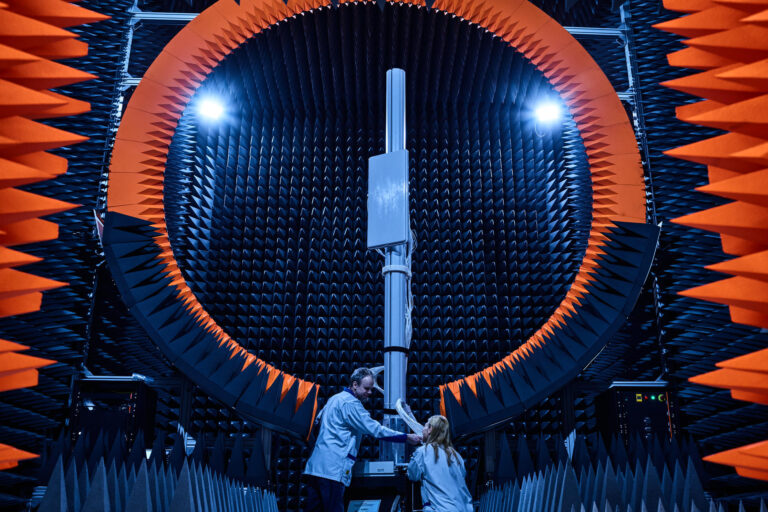
Enterprises of all sizes in every vertical market are developing digital transformation strategies. They are doing so to move with greater agility so that they can enhance the customer experience and take advantage of emerging growth opportunities. There is widespread recognition that a key element of business transformation is network transformation that is designed to accommodate SaaS, cloud services and next-gen transport such as 5G.
5G promises to bring about greater operational efficiencies, enable further automation of business processes, and usher in the age of an intelligent application universe with unprecedented scalability. For example, real-time, mission-critical communications can be delivered reliably and suffer near-zero latency for advanced science and medicine to benefit from more consistent, secure remote connections.
The reach and capacity of 5G will make it possible to address multiple market segments. For example, retailers will be able to rapidly open new stores with a compelling digital experience through AR/VR implementations that leverages all the characteristics of 5G.
The fibre push
Telecom networks suffer the same paradox as the highway system: when one traffic bottleneck is eased, it simply shortens the journey and increases the traffic to the next bottleneck. A major challenge will be to accommodate both the demand for 5G deployments and the resulting surge in mobile backhaul data. For 5G, infrastructure upgrades will be needed across the entire network, including subsea cables and small cells and towers, because 5G wireless will generate enormous increases in traffic.
To provide the coverage and capacity needed to deliver services successfully, the 5G network requires the greater capillarity of many more smaller cells. Enhanced services made possible with 5G – including smart cities and industrial IoT – will demand such greater footprint of coverage requiring more fiber installation in metropolitan areas.
Deloitte Consulting research suggests that the United States alone could need $130 to $150 billion in net-new fibre investment over the next five to seven years to support broadband competition, rural coverage and wireless deployments for technologies such as 5G.
Verizon, for example, has been preparing for 5G with major investments in deep fibre resources, a vast array of small cells and mobile edge computing capabilities, in addition to critical spectrum capacity.
Segmentation meets slicing
Given a broad enough, high-capacity highway road, traffic managers are able to use the infrastructure efficiently by partitioning the traffic into prescriptive lanes such as fast-ramp lanes, high-occupancy vehicle lanes bus lanes, bicycle lanes and heavy goods lanes, and even autobahns for business-critical, real time apps like voice and video.

Similarly, the flexibility of 5G enables “slicing” data traffic into customisable radio channels and core with application-specific sets of characteristics and service levels. But the same must be done in the transport network or suffer consequences, such as compromising the performance of latency sensitive services like voice, video conferencing, IoT sensors, and many others.
This 5G network slicing capability is big news for WAN-edge vendors like Versa Networks. As one of the few vendors to focus on service-provider NFV requirements, we have seen a rapid increase in the pilot and proof-of-concepts to support 5G connectivity at the enterprise edge to provide an optimal network-packet transport path via SD-WAN. Mapping the segmentation within a secure SD-WAN fabric to 5G slicing becomes an easier, more efficient and confident solution to achieve direct to Internet connectivity from the branch.
The larger the bandwidth pool, the less competition there is for space and time. However SD-WAN segmentation can give operators unique slices of time and performance – maybe tailored for specific apps, users or devices – as well as a slice across the mobile infrastructure. This provides CSPs with a “follow-you” policy across 5G with SD-WAN. In the Versa 5G architecture, each network slice serves a specific purpose – for example, slices optimised for IoT, low latency and multimedia.
Just one of many 5G benefits that SD-WAN vendors can offer the Mobile Network Operator (MNO), network slicing will be a significant business driver for 5G adoption. It will help Cloud Service Providers (CSPs) to address the complexity of operations and business process for deploying network slices across silos, and to commercialise 5G events and transactions. The granular data and analytics that SD-WAN captures will also help improve OSS/BSS integration.
In conclusion
Digital transformation will leverage innovation across the entire ecosystem to enable business to compete and win. Multi-Cloud, SaaS, Hybrid WAN, Mobility and 5G are some of the key elements that will be used to build the infrastructure for the next three decades. With its ability to deliver higher capacity at lower cost, 5G will become the new normal for high capacity access that can be deployed quickly and cost effectively.
Today’s mobile network will undergo significant architectural shift for 5G. Versa has been developing from day one a cloud native, multi-tenant software platform that is designed to meet the needs of 5G transport network and mobile edge computing nodes – delivering the needed operational and capital efficiency that enterprise customers, which in turn will enable telecom Service Providers to deliver services on a 5G infrastructure quickly, cost effectively and at scale.

Kelly Ahuja, CEO, Versa Network


